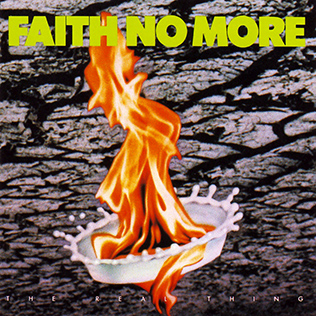Album: Queen
Artist: Queen
Label: EMI
Release Date: 13th July 1973
Queen's first album isn't often discussed, in television programmes about the band it tends to get skipped over very quickly and even fans prefer to heap yet more praise on 'A Night At The Opera' and later albums than revisiting what is in my opinion one of Queen's finest efforts. The album begins with 'Keep Yourself Alive', which despite being a wonderfully upbeat Queen-esque anthem didn't chart in the UK or America, and was left off the Greatest Hits albums. Sometimes it pays to delve a little deeper than a band's successful singles as it's a great album opener.
'Doing All Right' presents a more subdued continuation to the album, with some reflective lyrics and gentle guitar riffs before kicking off into some hard rock just before the end of the track. 'Great King Rat' is another song which seems to be largely ignored despite a classic Queen feel, with the beginnings of Brian May's classic overlapping guitar parts, choruses of falsetto backing vocals, and a general fantasy theme that continued into later Queen songs such as 'Seven Seas of Rhye' and 'The Prophet's Song'. There's also a faint hint of multi-sectional song structure, much like that of Bohemian Rhapsody which would see a release just 2 years later.
'My Fairy King' exhibits more of Queen's playful fantasy style lyrics which seemed to die off somewhat after the first two albums. As one of the most operatic and experimental tracks on the album, it serves to establish the band's signature style of their early period. With another rock instrumental break near the end, this track shows listeners that the band just don't do quiet ballads without a twist or two. 'Liar' is another excellent example of what a unique sound early Queen songs had, and is probably the best case study as to how the band's later songs were influenced by earlier tracks. Bouncing between loud and energetic sections and quieter breaks the song always feels like it's moving forward, never settling on a single idea for too long.
 |
| (The Seventies were an odd time for fashion and album cover photoshoots) |
'Son and Daughter' is a fusion of heavy metal and Queen's blues rock style, perhaps comparable to 'Stone Cold Crazy' later on in the band's career. If anything, this seems to indicate that the band were willing to incorporate any style of music into their sound (something which proved to be true in later albums) 'Jesus' is a lyrical recounting of parts of Jesus's life before a heavy guitar outro, leading fans of the time to believe that Queen were more of a psychadelic band despite never really revisiting this sort of sound or subject matter. Strangely though, the song seems to fit perfectly with the band's fantasy style and the overall sound of the album as a whole.
'Seven Seas Of Rhye' ends the album with an instrumental version of the song's intro, as it was unfinished at the time of recording. In a way it acts a sort of "coming soon" advertisement for the next album, which featured the full song. There are a few minor differences from what was featured on Queen II, but as the instrumental fades out, listeners are left with a sense of the album as a whole. From fantasy lyrics and light guitar twangs to heavy metal style solos and guitar breaks, with plenty of the band's signature style, Queen started as they meant to go on, and I think it's a real shame that none of the songs from this album made it onto the Greatest Hits, and that the album never really got the recognition it deserved. Still, with 3 equally great albums following this, you can hardly blame the listening public.
Rating 4.75/5.00













